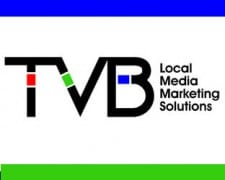 As RBR + TVBR reported Sept. 9, American adults love their television.
As RBR + TVBR reported Sept. 9, American adults love their television.
Data from the just-released “Media Comparisons 2016” study from GfK, which compares ad-supported media platforms in terms of reach, influence, engagement, trust and time spent among important demographic groups, found that adults aged 18+ spend some 4 hours and 54 minutes with television each day.
This compares to 62 minutes for radio, 56 minutes for e-mail and 50 minutes for social media.
Hadassa Gerber, Chief Research Officer at the Television Bureau of Advertising (TVB), says the TV findings in the GfK study are “pretty consistent with Nielsen’s findings.”
The study, which was prepared for TVB ahead of its Forward 2016 leadership conference on Sept. 29 in New York, examined the attitudes of 1,650 adults aged 18+ during the winter months of 2015-16. Then, in Spring 2016, a new group of 1,000 adults aged 18+ were studied to answer questions on reach and time spent with various media.
Respondents for the study were taken from the GfK Knowledge Panel, via a random sample. The panel is tightly administered by GfK, to ensure representation. For instance, broadband access will be provided to a respondent who may be among the 20% of the U.S. population that does not have such service in the home.
The dual looks at attitudes, and time spent/reach, were done after GfK ceased its syndicated reports that detailed such data, Gerber says.
While the two groups are not comprised of the same people, they are representative of the total sample, she explains.
With TV viewing so much higher than that of radio and social media, Gerber says it’s a wake-up call that makes people understand how much time the American adult still spends with television.
“I’m not knocking digital,” she notes.
TVB defines television viewing as broadcast and cable TV viewing, both live and playback.
“That doesn’t include live streaming,” Gerber says.
However, findings from a platform usage study revealed June 29 at the Nielsen Consumer 360 conference by the Council for Research Excellence (CRE) show TV outperforming computer, smartphone and tablet in viewer ad attention and recall.
“For ad recall, 62% of TV viewers were able to recall half or more advertisers, followed by tablet (47%), smartphone (46%), and computer (45%). For attentiveness, 29% of participants rated TV an 8-10 on a 10-point scale where 10 means complete attention, ahead of smartphone (23%), computer (20%) and tablet (17%),” CRE said.
That study, conducted by Hub Entertainment Research, also found that platform experience is related to actual screen size. “Independent of other factors, the viewing experience was significantly more positive among TV set viewers,” the CRE reported, with 89% of participants rating TV an 8-10 on a 10-point scale for enjoyment, followed by tablet (63%), computer (54%) and smartphone (53%).
Gerber is a CRE member.
“Is less time being spent watching television? Absolutely,” Gerber says. “But, in relative terms, they are still living with a lot of TV. I know that it puts a damper on people writing about digital … but it’s true.”
She continues, “Does TV have the massive reach of when there were just the Big Four networks? No. But, it’s still the biggest player in town.”
Gerber adds that Adults aged 18-34 still spend more time with TV than other media, despite the fact that this age group has always spent less time with TV than older adults.
For advertisers, talk of the decreased importance of Upfront week and television on the whole may be simply false.
Gerber lets the data speak for itself.
“In the fragmented world in which we live, I think it is more important than ever,” she says of the Upfronts. With 1 billion websites to choose from, Gerber notes, television cuts through the fragmentation to reach consumers in the most direct manner.
“TV is still the one place to go to reach a mass audience,” she says. “TV is still the foundation.”
RBR + TVBR





